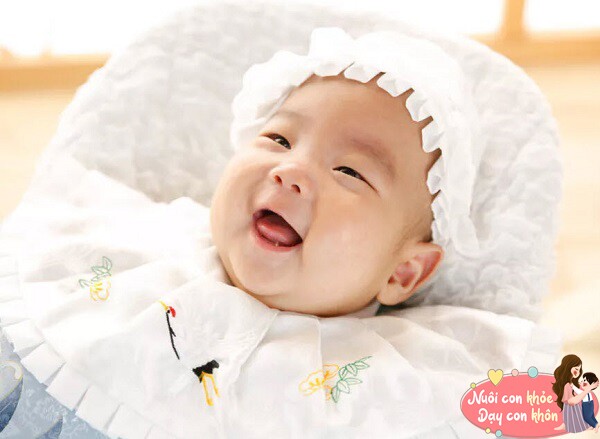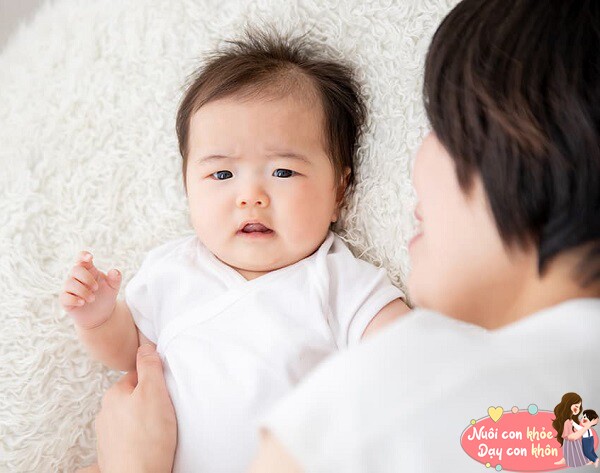## Emotional Development in Infants: A Guide for Parents
The first year of a child’s life is a rollercoaster of emotional development. Initially, newborns can only express basic emotions such as happiness, sadness, and fear through actions such as smiling, crying, or curling up. These reactions are their way of communicating with the world and signaling their needs.

**All of a child’s expressions are useful signals**
After birth, the two most common expressions we observe are crying and smiling.
**Crying as a way to express needs and ask for help**
Usually, a baby’s cry is easy to understand. Infants use different crying sounds to convey their needs, such as hunger, the urge to pee, or discomfort. By crying, newborns can attract attention, evoke empathy, and receive corresponding care from their loved ones.
**Smiling to express well-being and build bonds**
*When do babies learn to smile?*
Some mothers might say, “My baby smiles during their sleep, as if they’re having a sweet dream.”
In reality, from a scientific perspective, this is not a genuine smile but rather an unconscious reflex.

Smiling to express well-being.
Scientists categorize infant smiles into three types:
– The first type is the reflex smile mentioned earlier, which typically appears two to three weeks after birth.
– The second type is called a “stimulated smile.” About three weeks after birth, when parents interact joyfully with their baby, the infant will respond with a smile. This smile has a broader amplitude than the reflex smile and is a conscious action that helps the child learn to interact with others.
– The third type is called a “social smile” and doesn’t appear until the baby is around two to three months old.
This type of smile is used by infants to express kindness toward people they know or like, helping them establish close relationships. In doing so, they receive better attention and care.
Notably, the emergence of social smiles often indicates the development of certain brain regions. When the cranial nerves develop to a certain extent, babies learn to smile socially. Hence, many experts believe that “the earlier a baby smiles, the smarter they will be.”
If your baby doesn’t smile by the time they are three months old, it might indicate some developmental issues, and it is advisable to consult a specialist.
**Using fear to seek protection**
Many mothers notice that when their babies are around three to four months old, they stare curiously at strangers or flash a fleeting smile.
However, when they are six to eight months old, infants will display apparent fear when they see strangers. This phenomenon is commonly known as “stranger anxiety.” Additionally, children also become more clingy during this stage, crying and exhibiting “separation anxiety” when their mother or caregiver leaves.

Using fear to seek protection.
These emotions of fear and anxiety are also a part of their emotional development. Around six months of age, a baby’s cognitive abilities and memory undergo a rapid development. They start to differentiate between familiar and unfamiliar people.
Infants feel secure when their mother or regular caregiver is by their side. But when a stranger appears or they are separated from their primary caregiver, they become apprehensive, fearful, and anxious.
This indicates that the child has recognized who is important to them and who might pose a potential danger.
Hence, a newborn’s clinginess or wariness of strangers is not a sign of shyness or dependence but rather a normal development of their emotions, psychology, and cognition.

**6 Tips for Nurturing Emotional Intelligence in Infants**
During the first year, the most critical developmental task for a baby is to establish secure attachments through bonding with their parents, fostering a sense of internal security, and building trust in the world.
According to Dr. Laura, *”Before a child turns one, parental communication plays a significant role in shaping their brain and nervous system and even has lifelong implications.”*
Therefore, in the first year after birth, parents should focus on the following:
**Respond promptly to their needs**
Infants cry to express their needs. When they cry, if parents quickly comfort and meet those needs—for example, feeding them when hungry, putting them to sleep when tired, or playing with them when bored—the child will learn that they are safe, important, and can trust the world. They understand that their needs will be immediately addressed whenever they arise.
This is crucial for their future communication skills, emotional regulation, and sense of self-soothing.
On the other hand, if parents ignore their baby’s cries, the stress hormone levels in their body increase rapidly, making their brain highly alert and distrustful of their surroundings. This can negatively impact brain development, adaptability, and emotional regulation.

Responding promptly to their needs.
**Smile, hug, and caress your baby**
As mentioned earlier, the emergence of social smiles is closely linked to the development of their brain nerves.
Frequent smiling, eye contact, hugging, and caressing can stimulate the infant’s brain and promote healthy nervous system development.
Additionally, physical touch and caressing can stimulate oxytocin release, making them feel calm and relaxed, which lays the foundation for self-soothing.
**Adjust your interaction according to their mood**
Playing together is an excellent way for babies to learn and develop, but it’s essential to pay attention to their emotional cues during playtime.
When your baby looks at you and seems happy, you can continue talking, singing, or playing. However, if they look away or even become fussy, it means they’ve had enough stimulation and need a break. At this point, you should reduce the intensity of your interaction.
This responsive approach teaches them that they can express their needs through different emotions and that you will respond accordingly.
It helps them develop their emotional expression and regulation skills while building self-confidence and initiative.
**Don’t change caregivers frequently**
Around four months of age, infants establish stable attachments with their mother and other caregivers. This also forms the basis for their sense of security and exploration.
Therefore, during this stage, it’s best not to change caregivers frequently, as it can disrupt the formation of secure attachments and their sense of safety, which is detrimental to their psychological development.
**Create a safe environment for exploration**
From birth to one year, gross motor skills develop rapidly. As they progress from lying in bed and being cared for by adults to crawling, sitting, and standing, their mobility increases, and their exploration space expands.
During this process, it’s crucial to create a safe environment. For instance, put away all dangerous items, including medications, batteries, sharp scissors, small objects that can be swallowed, and cover electrical outlets with safety plugs.
You can also use a playpen to create a safe activity area. After implementing these safety measures, let your baby explore and play freely, as this is beneficial for their cognitive and psychological development.

Creating a safe environment for exploration.
**Promote emotional development through play**
Finally, use some games to enhance their emotional intelligence:
– Play music or a simple musical instrument, like banging pots with wooden spoons, shaking boxes filled with beans or rice to create rhythms. These activities provide musical stimulation and help release emotions.
– Engage multiple senses: Allow your baby to touch objects with different textures and temperatures, such as soft pillows, furry toys, dolls, hard and cold bricks, smooth wooden floors, water at varying temperatures, etc.
– Besides touch, use colorful and fragrant vegetables and fruits to stimulate their visual and olfactory senses. Use chopsticks to tap on different objects or produce various sounds to stimulate their auditory sense.
– Use emotion-related words when storytelling or playing with dolls. For example, “The kitten was overjoyed after eating its favorite treat,” or “The bear accidentally fell and burst into tears.” Including emotion-related words helps promote language development and improve emotional intelligence.







































